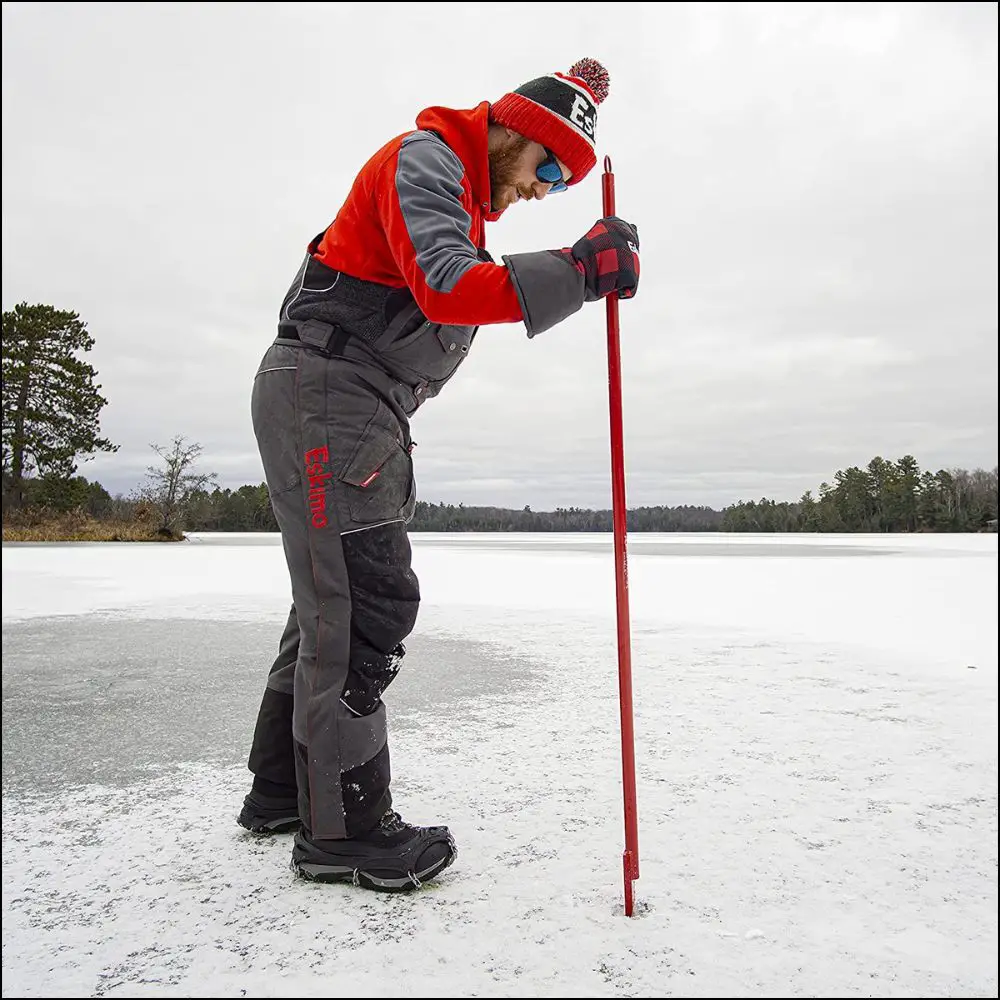Mastering Ice Safety: Guide to Ice Chisel for Serious Ice Anglers
Get the most out of your ice fishing experience with our guide to using an ice chisel. Learn how to safely and effectively chip away at the ice and the best ice chisels for your needs. Discover the power of the ice chisel for successful ice fishing today!
Hey, there fellow ice fishing enthusiasts! If you're gearing up for some late-season ice-fishing adventures, then you know how important it is to have the right tools in your tackle box.
One essential and versatile tool that every ice angler should have is an ice chisel.
In this article, we'll cover everything you need to know about ice chisels – from what they are and how to choose the right one, to tips on using and maintaining your ice chisel.
So, grab a hot cup of joe, get cozy, and let's dive into the ultimate ice fishing toolbox!
What is an Ice Chisel?
An ice chisel is a tool that typically has a sharp, narrow blade and a handle and long or short handle depending on its usage. Typically, chisels for ice fishing (imagine them to be an elongated version of ice fishing picks) come with long handles to give better leverage.
It is used to chip away at the ice to create or enlarge fishing holes, or to break through thicker ice. Ice chisels are often used by ice fishermen to create holes for fishing or to test the thickness and safety of the ice.
Types
A standard ice chisel for ice fishing comes with a long solid handle made of metal or wood that provides sufficient grip and a sharp blade at one end. Though all ice fishing chisels serve the same purpose depending on their shape size and materials used there can be quite a few different types of chisels.
Apart from this single-piece chisel, you can also get two-piece chisels that have a removable handle that can be swapped out for different lengths, making them more versatile.
Ice chisels are typically made of either steel or iron, with steel being the more durable of the two. Some chisels may also have a coating, such as chrome or nickel, to prevent rust and improve durability.
Some chisel heads are single-edged and sharp, while others have grooves to increase the efficiency of chipping and removing ice.
Ice Chisels and Spud Bars: Are they the same thing?
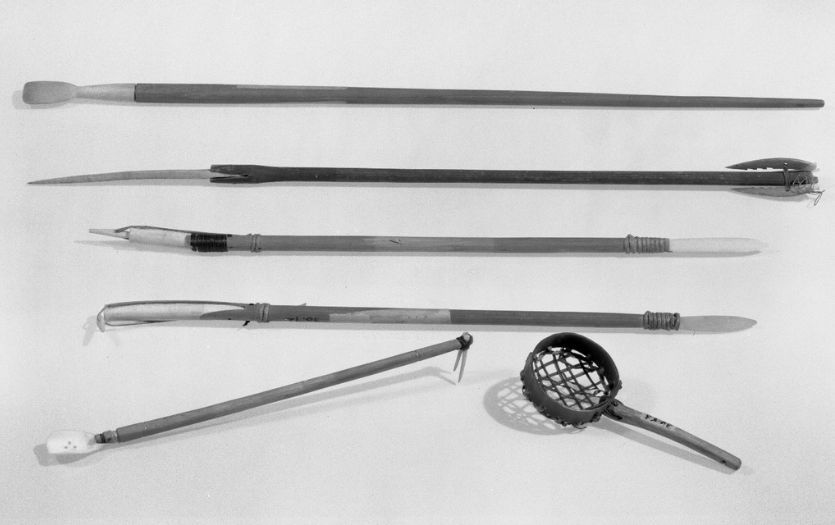
An ice chisel and a spud bar are similar in that they are both tools used for breaking through ice. In fact, these two are so close to each other that these terms are always used synonymously now but in the classical sense, they are not exactly the same thing.
Both these are simple tools that come with a long handle tool and mostly metallic blades. While a spud bar comes with a wide and flat blade, the blade of an ice chisel is typically a narrow, sharp one.
Besides ice fishing, spud bars are also useful in roofing and other construction purposes. But when you are on the ice, both these can be used to test the thickness of the ice, to create a path through rough ice, or to break up large chunks of ice. So to keep it simple, we won't differentiate between a spud bar and an ice chisel as they both can serve the same purpose for ice anglers.
How to Choose Ice Chisels
When selecting an ice chisel, there are several things you'll want to keep in mind:
1) Size
Ice chisels come in a variety of sizes, from smaller models designed for kids to larger, more heavy-duty models for adults.
2) Durability
As mentioned above, Ice chisels are typically made of either steel or iron, and some may have a coating to protect against rust. Select a material and coating that is designed to last through multiple seasons of ice fishing.
3) Handle Length
The length of the handle should also be taken into consideration; longer handles offer more leverage when hacking away at thick blocks of ice, while shorter handles may be easier to carry around between fishing spots.
4) Spike Design
There are different types of spikes available such as double-bladed and jagged-edged designs. Research which kind works best with your type of fish so you can get optimal performance out of your chisel.
5) Weight and Balance
An ice chisel should have good weight and balance; this helps ensure accuracy with each strike and limits fatigue during prolonged use.
The Best Ice Chisels That You Can Pick
Ice fishing can present different challenges and require specialized tools to get the job done. To make it easier for you, we have selected the best ice chisels that you can buy right now. Our top picks are:
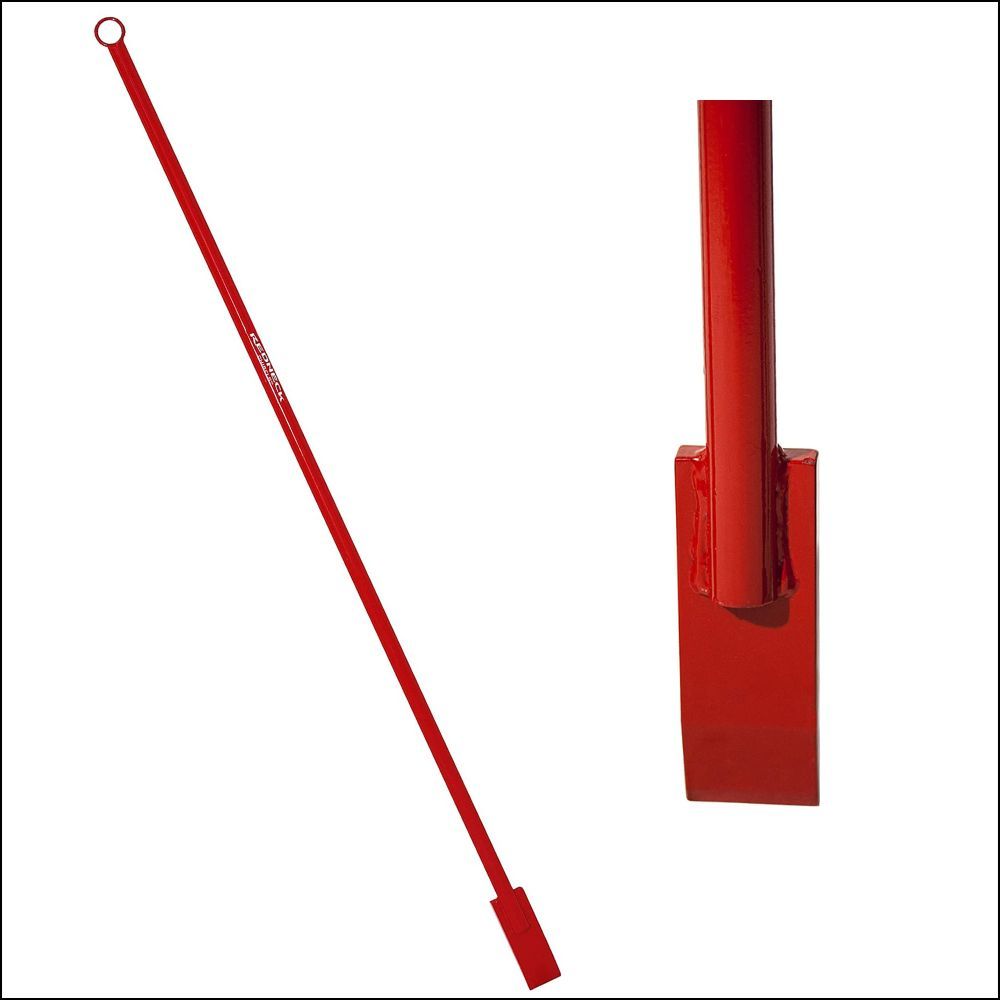
Eskimo CH7 52.5-inch Single-Action Head Design Ice Chisel
The Eskimo CH7 Ice Chisel is the perfect tool for any ice-related job. With its single-action head design, it offers efficient chiseling with maximum impact on every strike.
This spud bar's fully-welded steel construction ensures long-lasting durability and reliability. Its proper weight-to-length ratio enables easy maneuverability and control when in use.
Whether you're a professional or an amateur looking for a reliable Ice Chisel, the Eskimo CH7 Ice Chisel is sure to meet your needs.
Pros
· Great value pricing.
· Lightweight design.
Cons
· The grip can become unsteady.
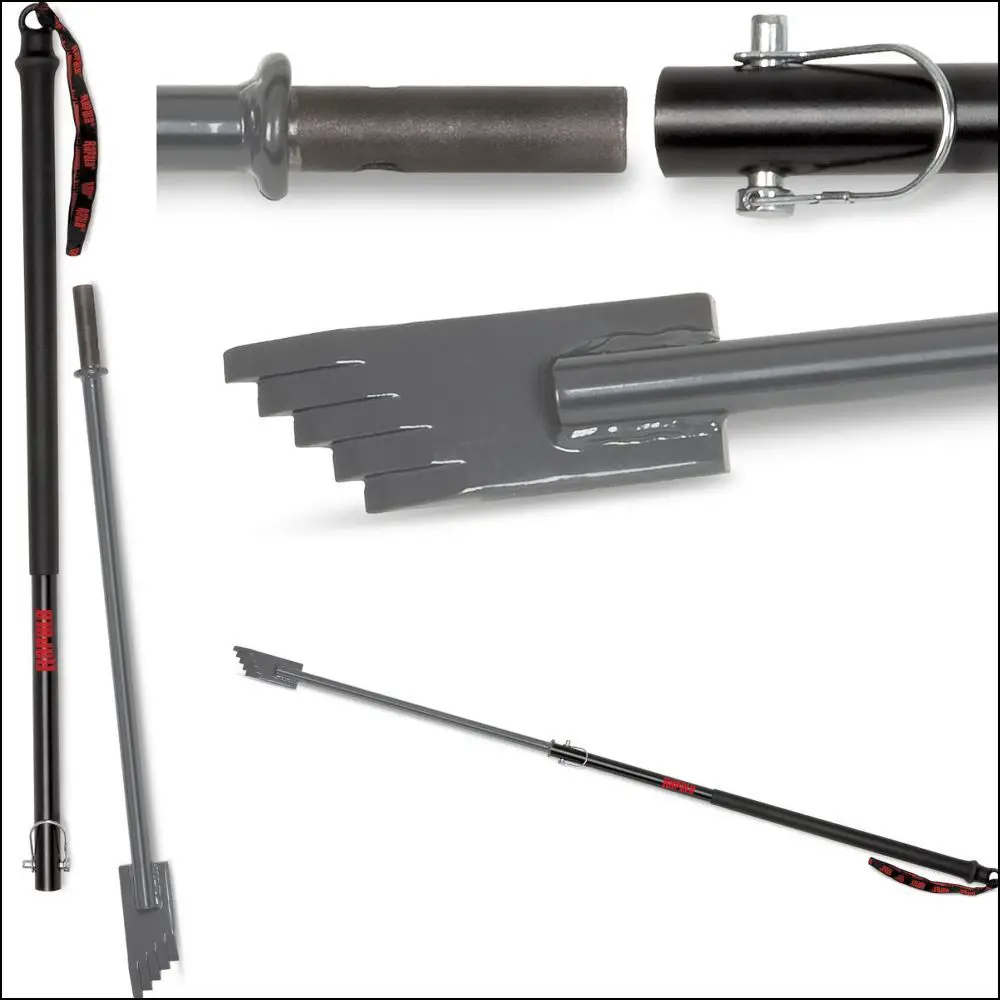
Rapala 62" Two-piece Ice Chisel
The Rapala Spud Bar will be your go-to tool for all your winter needs! The welded steel design is built to be shock resistant and its foam-coated handle gives you a firm grip for maximum control.
You'll also get a blade guard for added safety and a rugged strap lanyard that keeps it within reach at all times. Stop struggling with those icy surfaces and make sure you have the right tool on hand this season!
Pros
· Feels very balanced.
· Comfortable to use for a long time.
· Blade guard for added protection.
Cons
· Not very budget-friendly.
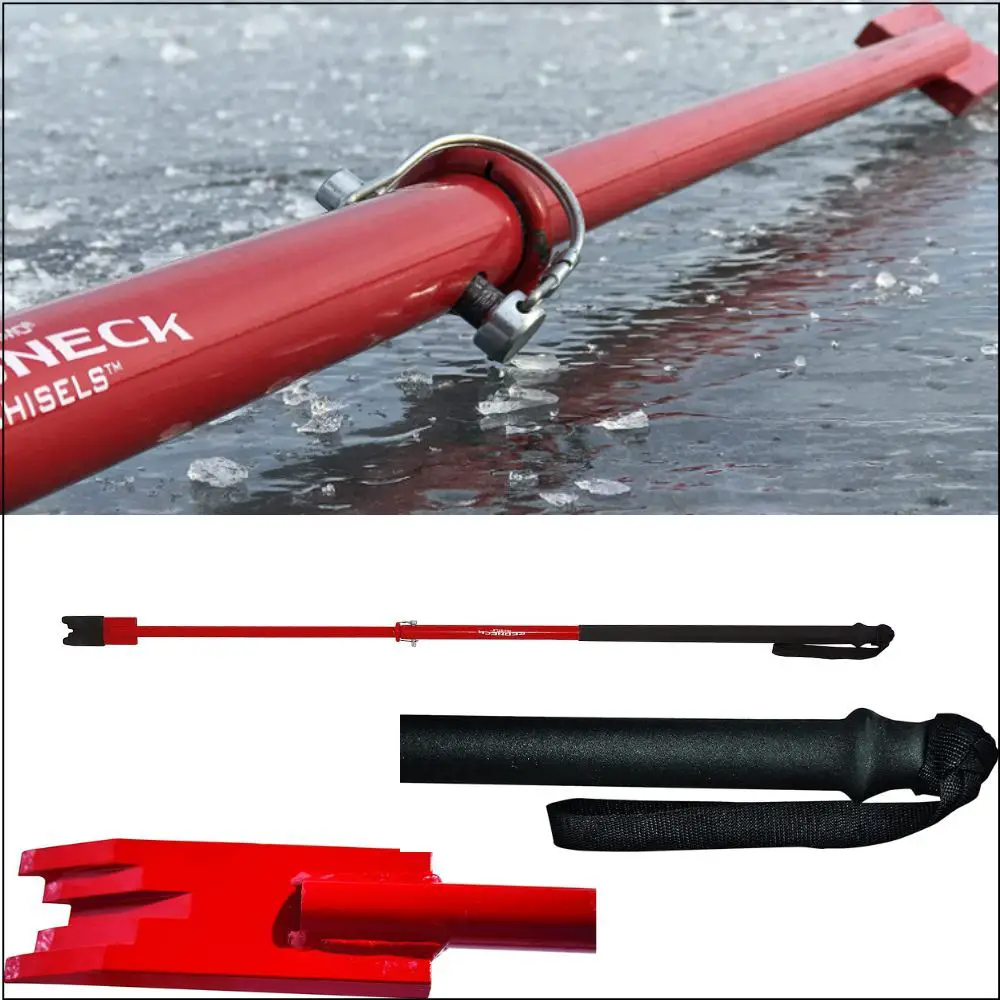
Eskimo CH11 Triple-Action Chipper Ice Chisel
Eskimo Triple-Action Chipper Ice Chisel Spud Bar -- your ultimate tool for making easy work of chiseling ice! Fully-welded steel construction makes this long 59.5" bar extremely durable, while its unique design allows it to feel balanced and deliver maximum impact to break through the ice with fewer strokes.
Whether you're looking to make quick work out of a frozen lake or just need an efficient tool that can cut through hard ice surfaces, look no further than the Eskimo Triple-Action Spud Bar!
Pros
· Excellent foam grip.
· Reliable performance and long-lasting durability.
Cons
· Expensive
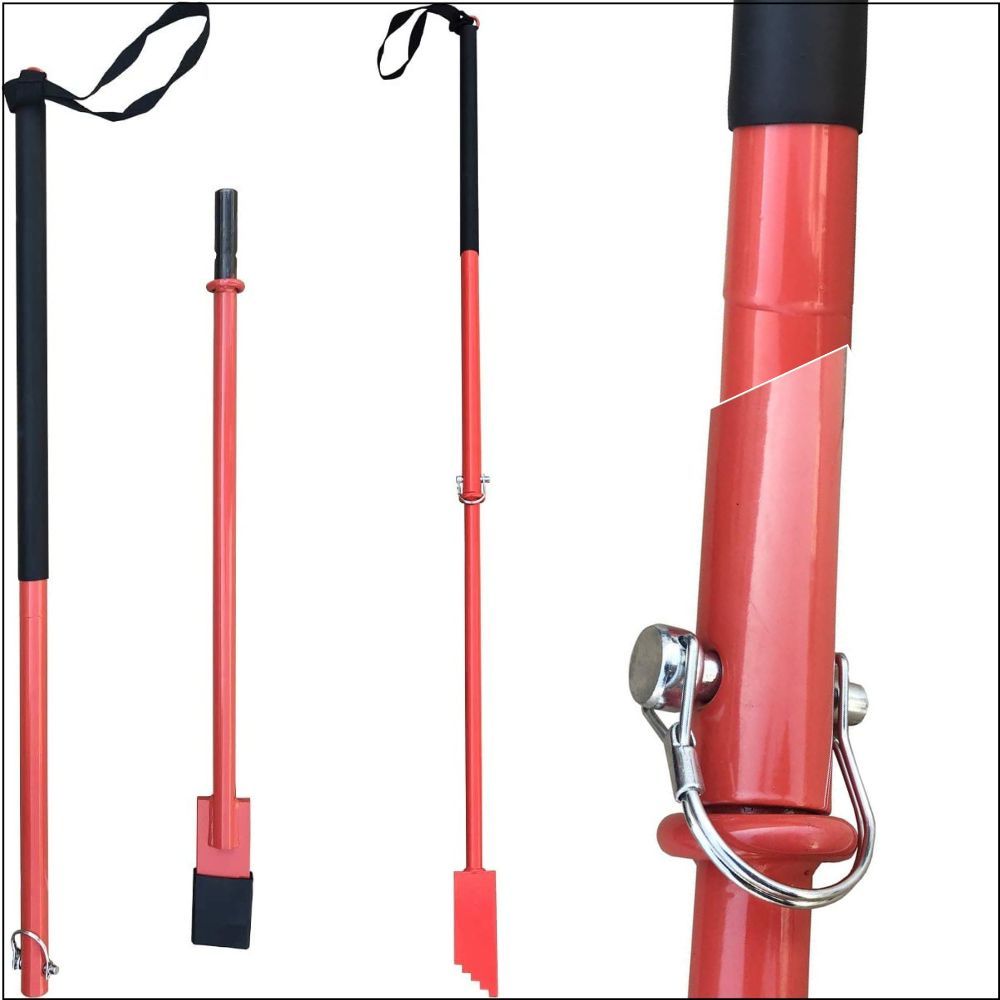
Thunderbay Heavy Duty Steel Chisel
The Thunderbay Heavy Duty Ice Chise has a durable and heavy-duty all-steel construction making it perfect for tackling any chiseling job you can throw at it. Plus, with a two-piece design, it assembles quickly and easily.
Don't let winter weather hold you back when outdoor projects are calling your name - grab the spud bar from Thunderbay to get things done fast!
Pros
· Rubber grip.
· Easy to carry two-piece design.
· Comes with a rubber blade cover.
Cons
· Not great for making fishing holes.
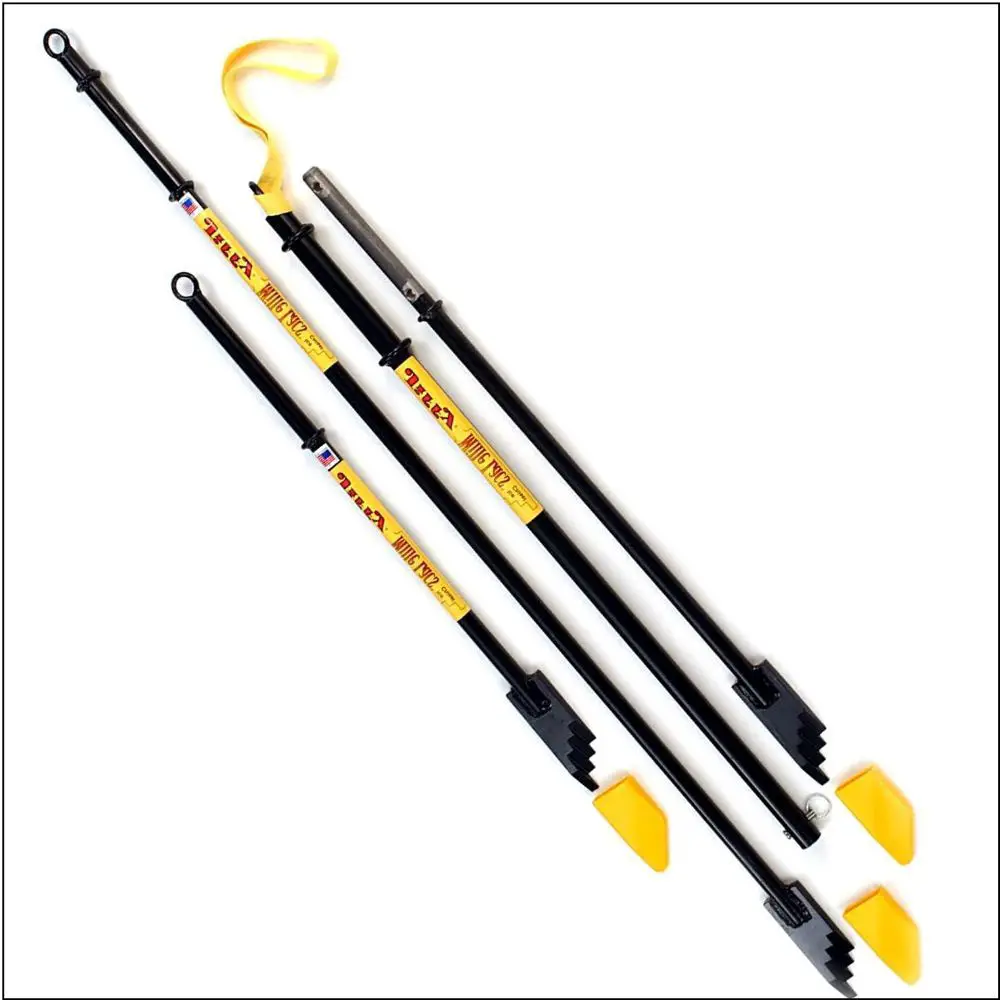
Jiffy Mille Lacs Chisel
The Jiffy Mille Lacs Ice Chisel is a lightweight spud bar that makes the job of digging out fishing holes much easier. You can reduce hand fatigue and still get the job done quickly!
The chisel is very sharp, so it cuts through ice easily - leaving you with plenty of time to enjoy your day on the Lake. Get ready to reel in some big ones with the Jiffy Ice Chisel!
Pros
· Solid construction
· Lightweight yet powerful.
· Comes with a blade cover.
Cons
· Not very budget-friendly.
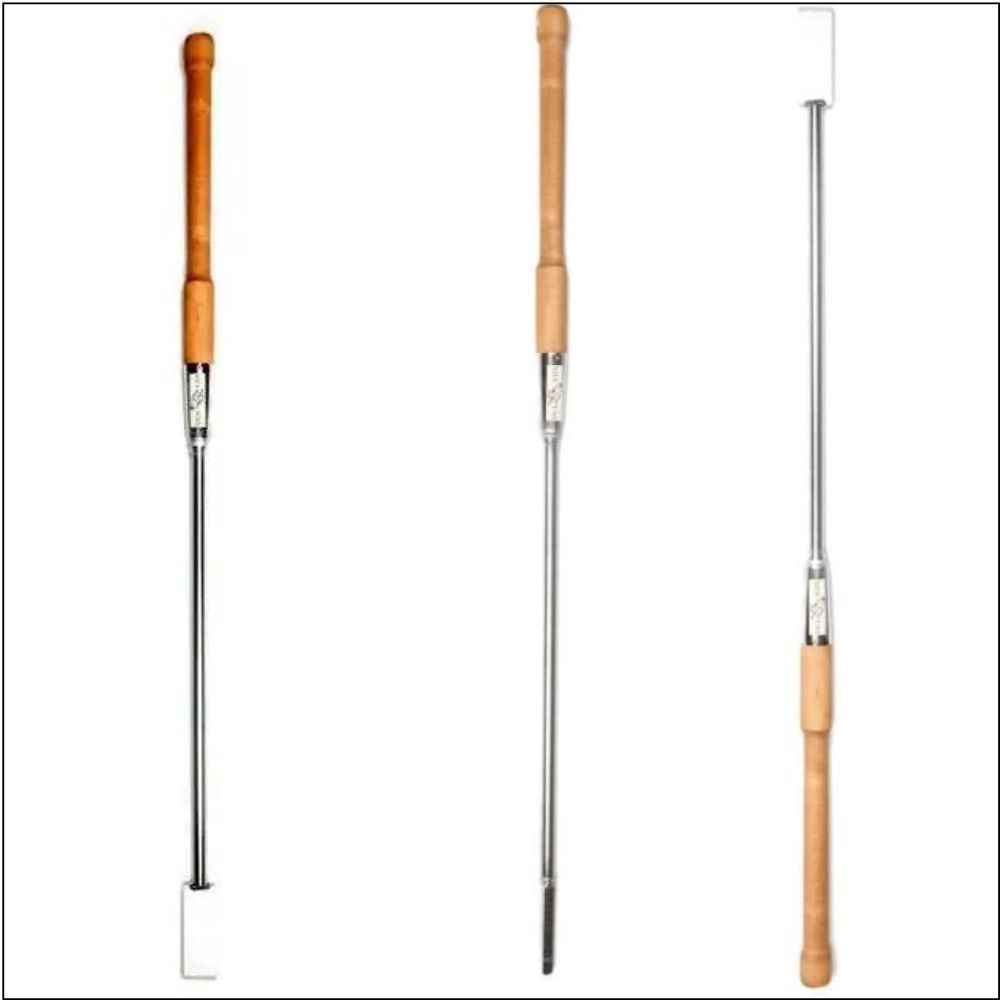
NILS Master USA 56" Ice Chisel
The NILS Master USA Ice Chisel is a premium-looking wooden handled spud bar that can chip ice with ease and efficiency. This spud bar chips ice can power through whatever comes your way - no matter how thick the layer of ice might be.
And best of all, this top-notch Ice Chisel comes at an affordable price. Get ready to get your hands on one today!
Pros
· The handle feels nice and smooth to hold.
· Comes with a sheath to protect the blade.
Cons
· The attachment point of the blade feels a little weak.
Frequently Asked Questions
Finding the right spud bar for your ice fishing needs can be overwhelming.
You have so many questions about what type of ice chisel to buy, but you don’t know who to turn to for answers. With all the options out there, how do you make sure that you get exactly what you need?
Don't worry! We've got your back. Our FAQ section has all the information you need on Ice Chisels so that you can make an informed decision with confidence!
What are ice chisels used for?
Ice chisels are tools used in various ice works, such as carving and shaping ice for sculptures and decorative elements. But when it comes to ice fishing, these chisels come with added durability and long handles to generate more power instead of precision.
Typically, ice anglers use them for three purposes:
· For testing the thickness of the ice. For ice fishing safely and walking on foot on frozen lakes, you must have at least 4-inch thick ice. Anglers often use their ice spud bar to poke into ice to check their thickness before stepping on them. This is especially useful during the early ice fishing season when the ice has not formed properly and in the late season when the ice begins to melt away.
· For creating holes in the ice surface. Many years ago, when there were no such things as augers, ice chisels were used to dig fishing holes. Even now if you don't have an auger you can use your spud bar to dig a hole to hang your tip-ups. Ice chisels are particularly effective for creating smaller holes of around 4-6 inches in size instead of the wider ones that augers create.
· For breaking off ice chunks from your fishing hole. Ice chisels can be used to break chunks of ice, clear snow, and slush from the surface of old holes without getting your hands wet. This helps to create even and smooth holes in the ice which prevents anglers from snagging their lines on jagged edges left behind by other blades or equipment.
What is the difference between an ice auger and an ice chisel?
Even though both augers and chisels can be used to create holes in the ice for fishing, augers are designed for only this purpose as such does this with much more efficiency. They come with sharp rotating blades which spin to drill holes easily. Augers come in both manual action and powered action blades, which can drill through even several feet of ice in seconds,
While chisels or spud bars are mostly considered ice safety tools and typically used to test ice thickness, they also come with sharp blades that can be used to create new holes in the ice, albeit much slower than an auger. A spud bar is effective only in cutting through thinner layers of ice compared to augers. Furthermore, they can be used as a last resort when you don't have access to an auger or other equipment.
Can you use a wood chisel for ice?
No, It is not advisable to use a wood chisel for ice. Wood chisels are typically made of softer materials than metal, and as such, they will be less effective in breaking up the hardness and density of ice compared to an ice chisel. Furthermore, using a wood chisel on frozen surfaces can cause it to become blunt quickly, thereby making it useless for both woodworking and ice-breaking applications.
The steel blade of an ice chisel is usually thicker and heavier than that of a wood chisel so that it can handle the extremely cold temperatures and mechanical forces associated with breaking apart thick sheets of ice.
Additionally, the blade angle on an ice chisel will often differ from that of a wood chisel as well since it needs to be sharper in order to better penetrate the hard frozen surface layers. Therefore, using a wood chisel for ice could cause damage to both the tool as well as yourself due to its inability to tackle the extreme conditions associated with working on frozen surfaces.
How do you check ice with a spud bar?
Checking ice with a spud is an effective and safe way to determine the quality of ice. Here are the steps to follow:
- Select a sturdy spud, that is strong enough to penetrate the ice.
- Use one hand to hold the spud steady while driving it into the ice with your other hand. Stop pushing once you have penetrated through the ice - this should result in almost no resistance from the ice.
- If you cannot penetrate the ice in one go keep hitting slowly at the same spot until you get through or are satisfied with the thickness of the ice.
- Carefully withdraw the spud from its hole and inspect it for signs of thinness or thickness of the ice.
- If there is almost no resistance when pushing through, this indicates that the ice is too thin to be used safely for activities such as fishing or even walking on it.
- On the other hand, if more effort was needed and/or there was great resistance when attempting to penetrate, then this means that the ice is thick enough and safe enough for fishing.
- Checking ice with a spud will help you prevent any accidents due to unsafe conditions caused by thinning or melting layers of frozen water that can occur naturally due to changing climatic conditions.
Final Thoughts About Ice Fishing Spud Bars
Fishing in colder climates can be challenging, but with the right equipment, you can make short work of it. Ice fishing chisels are an essential tool for anyone serious about winter angling.
And if you're looking for a new ice fishing chisel, now is the time to act! Just click the "Check Price on Amazon" button to add your favorite chisels to your shopping cart and take advantage of all the late-season clearance discounts.
Ice fishing can be an incredibly rewarding experience, so make sure you have the proper gear to take full advantage of the winter season.
Also, check out some of the other tools that you should have for your icy adventures:
